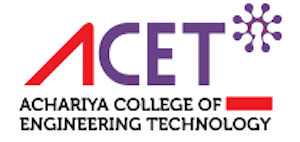Feedback committee
ABOUT
A feedback committee typically refers to a group of individuals within an organization or team who are tasked with providing constructive feedback on various aspects of the organization’s operations, projects, or initiatives. The purpose of such a committee is to promote continuous improvement, identify areas for development, and ensure that the organization is meeting its goals effectively.
Key responsibilities of a feedback committee may include:
- Reviewing and evaluating processes, procedures, and performance metrics.
- Providing feedback on specific projects or initiatives to help identify strengths and areas for improvement.
- Collecting feedback from stakeholders, customers, or team members and synthesizing it into actionable insights.
- Making recommendations for changes or improvements based on feedback received.
- Monitoring the implementation of feedback-driven changes and assessing their effectiveness.
It’s essential for a feedback committee to be composed of individuals with diverse perspectives and expertise relevant to the areas being evaluated. Additionally, members should be able to communicate effectively and collaborate to ensure that feedback is both meaningful and constructive.
Regular meetings, clear guidelines for providing feedback, and a commitment to transparency and accountability are essential for the success of a feedback committee. By actively engaging in the feedback process, organizations can foster a culture of continuous improvement and innovation.
The responsibility of a feedback committee primarily revolves around providing valuable input, guidance, and recommendations to enhance the functioning and performance of the organization or specific projects. Here are some key responsibilities:
- Feedback Collection: Actively solicit feedback from relevant stakeholders, including team members, customers, partners, and other relevant parties. This could involve surveys, interviews, focus groups, or other means of data collection.
- Analysis: Thoroughly analyze the feedback received to identify patterns, trends, and areas for improvement. This may involve synthesizing qualitative and quantitative data to derive actionable insights.
- Recommendations: Based on the analysis, develop clear and actionable recommendations for improvements or changes to processes, procedures, strategies, or other aspects of the organization’s operations.
- Communication: Effectively communicate feedback findings and recommendations to relevant stakeholders, such as senior management, department heads, or project teams. This includes presenting findings in a clear, concise, and compelling manner.
- Monitoring and Evaluation: Monitor the implementation of recommended changes and evaluate their impact over time. This involves tracking key performance indicators (KPIs) or other metrics to assess the effectiveness of the feedback-driven improvements.
- Continuous Improvement: Continuously assess and refine the feedback process itself to ensure its effectiveness and relevance. This may involve seeking feedback on the feedback process and making adjustments as needed to enhance its impact.
- Accountability: Hold stakeholders accountable for addressing feedback and implementing recommended changes in a timely manner. This may involve setting deadlines, establishing performance targets, or other mechanisms to ensure follow-through.
FEEDBACK COMMITTEE MEMBERS
| S.NO | NAME | DESIGNATION | POSITION |
| 1 | Dr.S.Gurulingam | Principal | Chairperson |
| 2 | Mr.F.D.Anfinston | HOD / ECE | Convener |
| 3 | Ms.A.Arthi | Assistant Professor / CIVIL | Coordinator |
| 4 | Mrs.S.Rajalakshmi | Assistant Professor / CSE | Coordinator |
| 5 | Mrs.T.Valarmathi | Assistant Professor / ECE | Coordinator |
| 6 | Ms.T.Abinayasaraswathy | Assistant Professor / EEE | Coordinator |
| 7 | Mr.D.Anbuselvan | Assistant Professor / MECH | Coordinator |
| 8 | Dr.G.Srinivasan | Assistant Professor / S&H | Coordinator |


